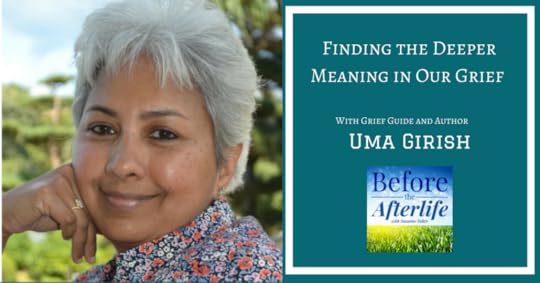Suzanne Falter's Blog, page 13
June 4, 2018
How (and Why) to Choose a Good Psychic
 A lovely bit of magic happened to me lately that I feel called upon to share: I had a fantastic psychic reading. The reason I bring this up is because I am a firm believer in tapping into the Universe, God, Allah, or whatever you wish to call that lovely power that connects us all. And through whatever means are necessary.
A lovely bit of magic happened to me lately that I feel called upon to share: I had a fantastic psychic reading. The reason I bring this up is because I am a firm believer in tapping into the Universe, God, Allah, or whatever you wish to call that lovely power that connects us all. And through whatever means are necessary.
I can’t tell you whether psychic readings are ‘real’ or not … all I know is that when it comes to staying true to my path, they work.
Speaking for myself, my life/work/dreams roll extra smoothly when I turn on the psychic juice. Here’s why: often we just have plain old no idea what we’re doing. We stumble. We scrape our knees. We cry to Mommy. We want to quit. And if we’re not paying close attention, this is precisely where things can break down.
Enter a good psychic. Great psychics have a philanthropic love for helping others connect with their purpose in life. They speak a truth that is right and good, not full of dark threats and bogeymen. Yet, they’re not afraid to speak in specifics.
A good psychic will tell you unpleasant truths you may not want to hear. They are unafraid to tell you just how life is, warts and all, and what you can do to maximize your time here. Often these are things you already know, but just need to hear someone else verbalize so you can finally act on them.
For more than a decade, I visited the same New York City psychic on my birthday. (She no longer gives readings, unfortunately, but she is the author of a fun book, Small Mediums at Large.) I always thought of this reading as a super-guided coaching session that would steer me well throughout the year.
Because she always saw the bigger picture, Terry would say things that would lift me out of my little rut, so I, too, could scan the horizon. To this day, I have no idea if her predictions were dead-on accurate, or if it was the simple power of her suggestions at work in my mind that actually made things happen. All I know is that nine out of ten times she was right.
An example: when I had the somewhat embarrassing notion that I might actually be able to write songs and get up and sing them, I went to see Terry. “What are all these songs and why are you hiding them?” she demanded as soon as walked into her apartment. She went on to describe the woman I would perform with for the next five years. She even told me how to find her, and precisely how we would work together.
Our lives are spiritual open books, and each choice we make is imbued with spiritual energy. You want to write that book or start this business or take up with that love because you are meant to on a grand karmic level. Here you will find soul growth, and lessons galore.
So specific spiritual guidance is not only helpful, it’s essential. And it’s part of the same organic cloth the spiritual path is woven from.
Just last week I had a reading from an intuitive I knew but had never worked with. I ran into her, in fact, at a retreat center where I had gone to tap into some deeper answers about my work. Little did I know just how specific those answers would be.
Her certainty gave me courage, and really fired me up with inspiration. It served as a real validation to my ‘crazy’ ideas. And I found myself asking questions about all those annoying little fears and worries that had been jiggling around in my head about my newest projects.
I quickly learned that most were just cosmic static my brain had cooked up for no good reason. And that, as ever, everything will be just fine!
Hallmarks of a good psychic:
1.
They come recommended. I’ve had readings with many psychics over the years, and the ones I really liked the most came road tested by friends. (A good way to locate a psychic is to put a feeler among like-minded friends.)
2.
They will work with you via Skype, phone, or live. In other words, they may well be across the world. Some I’ve worked with remotely request an object of yours they can hold while working with you; others don’t feel the need.
3.
They aren’t necessarily cheap. I’ve had little experience with street-front psychics who charge $25 for a quick palm reading, say, or a glance at the tea leaves. Generally you get what you pay for.
4.
They take their time. A great psychic reading usually lasts longer than an hour, some as long as two hours. This gives you psychic time to really delve into who you are and what you’re all about.
5.
They’ll don’t need you to sign disclaimers, waivers and the like. Incredibly, the worst psychic i ever went to — with whom I had many protracted emails before we even got to the reading — insisted I sign an agreement that I would not attempt to sue him. Just for a reading. I mean … wow.
6.
They seem to intrinsically ‘get’ you. Great psychics are intuitive creatures who seem to speak your language. In a really good, connected reading, they’ll see you for who you are, and freely advise you on that basis.
Whether you think psychic readings are a waste of time, or money well spent, consider this possibility. We may, in fact, be swimming in a limited reality. So why not at least give a different one a shot?
The post How (and Why) to Choose a Good Psychic appeared first on Suzanne Falter.
May 17, 2018
10 Meditation Tips For Extremely Busy People
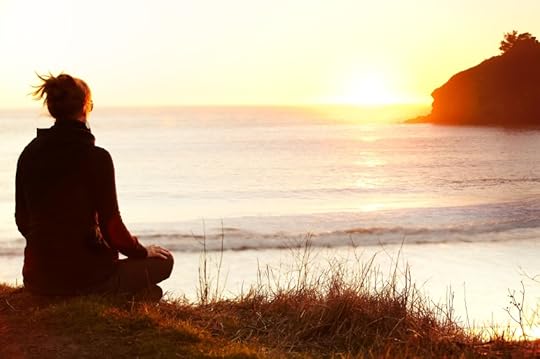 If you’re like me, you’re a restless meditator. And yeah … that’s because, like you, I’m super busy all the time.
If you’re like me, you’re a restless meditator. And yeah … that’s because, like you, I’m super busy all the time.
TAKE NOTE BUSY PEOPLE: You can meditate as little as 10 minutes per day to get real benefit. So this is not a time suck. In fact, it’s the mobilizer — the grease on the wheels that makes your life work with greater ease.
Here’s why meditation is so important every day. First of all, it seriously chills you out. When we push ourselves to hell and back, our adrenal glands and our entire nervous systems crave a break. Which is why meditation is now considered a standard treatment for people with high blood pressure, stress and heart disease. But there are other, more subtle reasons to do this as well.
When I don’t meditate at least five times each week, just for 10 or 15 minutes, the drama around me seems to increase sevenfold. My work, and my life, just go far more smoothly when I meditate.
My meditation sessions are my place to get back to myself, to reground in a new, calmer, more upbeat or relaxed reality. And they are my connection to the Great Beyond, and whatever may be out there.
Meditation really has become the key to my serenity.
So here are some tools I’ve found that keep even this wildly active mind on the Emptiness Channel.
1. Meditate first thing — before anything else. Okay, I will admit to a certain amount of tweeting in bed that goes on before I actually get up each morning. But then I move right to the cushion in my PJ’s. Because if I don’t … it just doesn’t happen. It helps to meditate in the same place and at the same time every day, so you establish a routine.
2. Time your meditation. I know it sounds counter intuitive, but timing will help your mind stop worrying about when your meditation ends. For this, I like to use the free app Insight Timer. You can build your own timer with lovely choices like soothing waterfalls, rainfall or gentle music. You even get your choice of gongs when it ends.
3. Just count your breath … and that’s it. Don’t worry if you think you can’t meditate, or you have to go sit in Zen stillness for hours to learn to do this. Not true! Just sit in a chair or cross-legged on a rug (see #7), close your eyes, relax your body, and let go. When you notice thoughts moving through your mind, simply observe them and then get back to thinking about nothing in particular. Emptiness is nice — and you may not experience much of it. So it really helps to count your breath (“inhale-2-3-4, exhale 2-3-4”), or repeat a single word or short phrase. Gentle progress is the goal.
4. Use guided visualizations. Can’t empty your mind easily? No worries. After decades of meditating to silence, I discovered the value of using a soundtrack. I click on the little headphones icon on Insight Timer and tap into 5000 different guided visualizations. They vary wildly, and have titles like ‘Have A Great Morning’ to ‘Find Restful Sleep’. Dig around and you can find some fantastic ones — some only a few minutes long. I find the variety keeps me motivated.
4. Don’t eat or drink just before meditation. The emptier your body is, the more likely you are to find that easeful place of emptiness. Don’t even have a quick coffee. A little water, however, is just fine.
5. Remove distracting noise. Do you live in a noisy space? Try some earplugs, or even noise cancelling headphones tuned into Insight Timer.
6. Get the temperature right. Make sure you’re not too hot or cold – dress and set up accordingly. You really want all distractions gone.
7. Find the perfect cushion. Do you need to go out and purchase a special meditation cushion (aka a Zafu)? No! Though they can be fun. I have one that’s filled loosely with buckwheat groats, so it can mold to a butt rather nicely. These days I just stack up some couch cushions, and sit on them cross-legged on top of a large, firm ottoman in our living room. (Put that cushion just below your butt, and sit cross legged so you don’t slouch.) Some people prefer a supportive chair that doesn’t have so much give you slump.
8. Take a 2 minute meditation break during the day. When you’re pushed to the wall, you can indeed turn on a meditation recording, or just close the door, uncross your arms and legs and empty your mind. Count your breath. Count sheep. Say a mantra silently to yourself. (“I’m doing just fine,” works for me.) Begin and close by taking three deep breaths and you should be good to go.
9. If all else fails, meditate before bed. This is especially helpful if you have insomnia or lack sound sleep. The evening meditation helps you really let go of the pieces of the day that might keep your overworked mind distracted. Think of it as a way to give your mind a clean sweep.
May your practice serve you well … ommmmm …
The post 10 Meditation Tips For Extremely Busy People appeared first on Suzanne Falter.
April 27, 2018
What’s Really Going on When Women Sob ‘For No Reason’
 I’m embarrassed to admit it, but going to church makes me cry. Like … every single time.
I’m embarrassed to admit it, but going to church makes me cry. Like … every single time.
I stand there trying to sing a hymn, or I sit there listening to someone’s poignant share about what their life is like.
And I weep. No matter how much I try to fight it, I cannot.
WTF, right?
Believe me, it’s not that I’m suffering. I’m a perfectly happy person. These days there is nothing inherently ‘wrong’ in my life. It’s just that I find myself crying at times. And damned if I know exactly why.
Is it my hormones? The phases of the moon? Or is it just one of those eternal mysteries, like the missing sock, that has no easy answer?
One minute I am fun, lively, capable and generally solving all sorts of problems. But the next thing I know I am sad and limp … a real wet dishrag. And for no apparent reason.
Speaking as a woman who finds her way to weepiness often, I believe I am not alone. I can still remember my mother crying into her perfectly prepared plate of dinner when I was a child. It was mystifying then, but now I understand.
It’s not that there actually aren’t enough hours in a day. There are and we know it.
It’s that we can’t live up to our own unreasonable expectations.
We can’t always be that perfect mother, wife, sister, neighbor, community leader or career superstar we long to be. Nor can we fix this broken world by ourselves … and especially not all at once.
My daughter Teal used to call me up regularly so she could have a small meltdown. “Oh, mom,” she’d begin, her voice filling with tears. “I don’t even know why I’m crying!”.
In the last few years of her life, before her sudden death in 2012, we had an agreement in that she could call me up any time just to cry for no reason. We figured she was on schedule if she had a weepy meltdown about every two weeks.
Because sometimes, honestly. you just need to cry. But … why? Here are a few ideas.
1. We get tired of holding the world on our shoulders. Yes, we do feel we must hoist it alone … even with a perfectly competent mate by our side.
2. We care too much. About our children, your children, our aging parents, plus our friends, colleagues, the homeless guy down the street and the neighbor’s sister’s cat. No one escapes our empathic radar. We just can’t help it.
3. We are all heart – and then some. We tend to feel our way through life. So when we come a bit unraveled … well, we fall apart. It’s that simple.
4. There isn’t really enough time in life to get it all done. So we slide into emotional overwhelm sometimes. That’s when we long to be soothed with a pint of Ben & Jerry’s served in a dark room.
5. Someone still has to do the laundry. Whether it is us, a helpful child, our spouse or the nice lady we hired to do it, we still have to think about it. Along with several thousand other things, all of which are quietly nagging us … all the time … in the background.
This emotional landscape — just like our purses and backpacks — represents a crowded no-man’s land packed with accumulated stuff. There is just so much. How we long for someone (anyone!) to take it all away.
And that’s about when we dissolve into tears.
The solution is to step away for a moment and fall apart, gently and willingly.
Simply allow all that emotion to come tumbling on through. Know that whatever the issue is, this, too, will pass. Not matter how big or small … having a cry really will make it all better. For crying is actually the body’s way of cleaning house.
I once met a photographer whose work was shooting tears microscopically. Happy tears looked completely different from the tears of grief or anxiety, she told me. In other words, your heart, your soul and your body know exactly what they are doing when you weep. And every last tear has been designed to give you what you need. So stop questioning and worrying.
Instead, start trusting your own beautiful process, and go ahead … sob if you want.
If anyone around you asks what is going on, just let them know what you need. Perhaps it’s just a bit of warm appreciation, like a soft blanket of comfort. Perhaps an arm around the shoulders would do nicely, as well as a consoling word.
Sometimes all we need is someone to listen. Then, together, we can return to the heart of love, for isn’t that what we are made of?
I invite you to think of your next weepy breakdown as a necessary pit stop for refueling.
No shame. No guilt. Just love.
The post What’s Really Going on When Women Sob ‘For No Reason’ appeared first on Suzanne Falter.
March 23, 2018
What to Do in a Crisis … Like Right Now
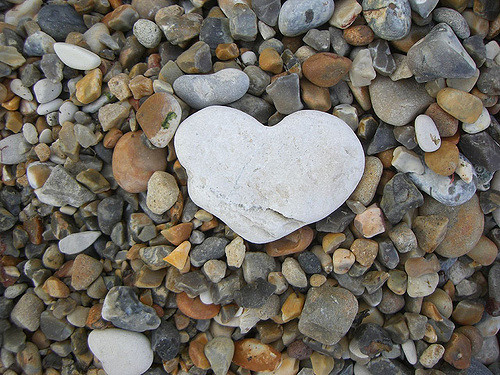 I just read that the ocean gyre has whipped up the Great Pacific Garbage Patch into something five times the size of the state of California. (Turns out all those plastic grocery bags have to go somewhere.)
I just read that the ocean gyre has whipped up the Great Pacific Garbage Patch into something five times the size of the state of California. (Turns out all those plastic grocery bags have to go somewhere.)
The GPGP’s plastic content threatens our food chain and our own well-being just as much as potential nuclear war, ‘Big One’ earthquakes, rampant gun violence, economic meltdowns, extreme weather, and the plain old nastiness that seems to hallmark these times.
I have to ask … where is the love?
The worrier in me collapses in fear sometimes. There are just so many threats I feel like a child who can’t find her mother in the grocery store. No matter which aisle I run down … she simply isn’t there.
Yet, there is a saner part of me as well. And she bids me ‘Chill out.’ She advises me that these times are necessary for our growth. For without them, we would die simply through stagnation.
We would become limp and useless. We would just get old, fat and die.
Oh yeah, that’s right, I think. No one ultimately gets out of here alive. So easy to forget that small detail.
Then I turn a page and read that a dear friend’s beloved assistant Chelsea – who is really a member of her family as much as a paid employee – has terminal cancer. At age 34. And yet, here is Chelsea on Facebook, documenting the joy that she sees outside her window in her burgeoning spring garden. A joy she shares vividly with pictures.
And here is Chelsea in Huff Post, detailing her journey so others with cancer can learn that they are not alone.
This is what times of crisis are all about. They are about reshuffling your life to understand what really matters in this minute, in this precious here and now. Hint: it’s actually NOT the To Do List.
Instead – and perhaps improbably – it’s just about the joy of connecting with others.
I read about this in the aftermath of wildfires that destroyed parts of California’s beloved wine country. ‘Santa Rosa Stronger’ is something you see spray-painted on the plywood that surrounds the burned-out sites. Their community, which was tight knit to begin with, has indeed grown ever stronger. They love it there – and they love each other. Together, 95% have vowed to stay and rebuild their communities.
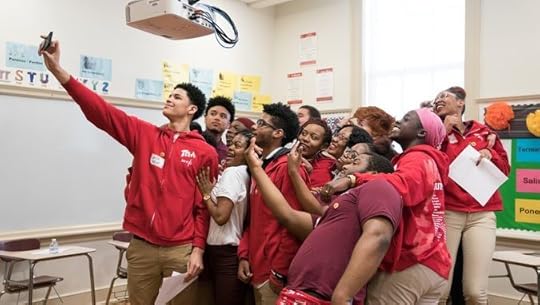
I see this in a video of Parkland High students meeting with kids from the South Side of Chicago. The Chicago teens talk about how they have to live with the risk of being gunned down by assault weapons every single day of their lives. About how they’ve lost friends and siblings to the steady, pernicious threat of gang violence. They explain this to their mostly white Parkland allies, who listen with respect and appreciation.
White kids, black kids. It doesn’t matter – they’re all on track to inherit an ever more damaged world. Together, they begin to rally forces. So they understand that only a slim, invisible line separates them – or any of us.
This is the line of disbelief. The line says ‘What I’m going through is worse than you’ or ‘You couldn’t possibly know how bad this is’.
The line says, ‘You don’t know me.’ But in that room filled with traumatized young people, that line was gone. Collectively, these students knew it was time to stand up and solve their problem. For they did, indeed, know each other.
When we tell the truth, we all know each other. And we are all capable of feeling each other’s pain. Most of all, we know how to transcend the invisible line and reach out. We even know how to ask for help, and give it where needed.
We all suffer in this life, each in our own way. And so we are brought together again and again to help find ways to end that suffering.
This is the opportunity of every last crisis. As Chelsea knows. As the Parkland and Chicago kids know. And as you and I know.
May you find a way, just today, to cross your own invisible line of disbelief and touch someone else. Perhaps someone you don’t even know.
That, my friend, is where the love is.
It’s right here in front of all of us.
The post What to Do in a Crisis … Like Right Now appeared first on Suzanne Falter.
February 22, 2018
How to Find the Lessons Hidden in Everyday Dilemmas

By now, we’re catching on: a life in crisis can be a fantastic teacher. There’s nothing like a complete reset to wipe you clean, right? As you are dumped on your butt, you have no choice but to look around and reach for solutions. Which is how a lot of lessons get learned.
Yet … at the same time … what if a gentler sort of lesson-learning was available to each of us all the time, every day?
What if you really could look up from whatever is troubling you in the moment, and find the lesson staring back at you? What if your everyday troubles, themselves, were your finest teachers?
Yet, those lessons don’t always just jump up and present themselves in clear and easy terms. Sometimes you have to work for them.
A friend was struggling with a relationship issue in her job as a first responder. It was a beautiful spring day as we walked and talked around Lake Merritt, but she was angry and fed up with her job.
I could hear that an old belief was keeping her stuck, that she couldn’t own her feelings in the workplace. Somehow she thought she had to be a strong, capable, “together” woman all the time, 24.7. When I asked her what she’d say if she could say anything to her crew, she was silent.
Somehow my friend believed that unlike the rest of us, first responders aren’t allowed to have feelings even when they’re not in emergency mode. And yet, as we walked and talked, her emotions were right there.
“What do you need?” I finally asked her.
She paused for a moment and looked out at the lake. “I think I need to be vulnerable at work, and talk about what’s bothering me.”
Bingo.
When we allow them, our emotions can be arbiters of real change in our lives. It’s really very simple, but oh how we try to avoid this simple truth. We don’t want to feel our damn feelings –- and yet, they are the most direct path to the wisdom inherent in each crisis.
This is not to say we have to lash out, pound our fist and raise our voice. We can practice our words ahead of time, and deliver ‘right speech’ as the Buddhists so beautifully put it.
We can also make requests instead of shrill demands … and we can keep on politely making them until our issue is resolved. (And okay, a little more force may need to be used occasionally, but only after all else fails.)
Note: I’m not just talking about anger here. Sometimes what another person needs to hear is that we are scared. Or sad. Or that we simply need a pat on the back and a little support.
Wherever you are today, and whatever is bothering you, allow yourself to surrender to your feelings. Even if they take you to uncomfortable places you assume you’d rather not visit. Your emotions are happening for a reason. And they are simply God’s way of taking you more deeply into life.
There is no good reason to resist, no matter what you were told about your feelings when you were young.
And, as ever, enjoy responsibly!
Namaste.

The post How to Find the Lessons Hidden in Everyday Dilemmas appeared first on Suzanne Falter.
October 20, 2017
The Patriotism of Listening
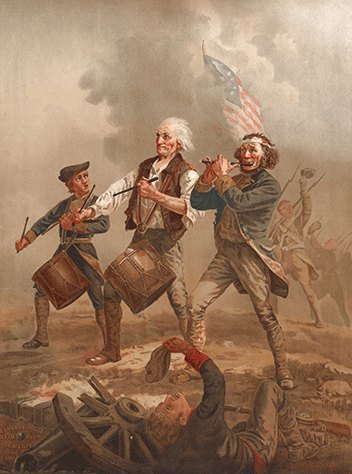 “Tyranny, like hell, is not easily conquered; yet the harder the conflict, the more glorious the triumph. What we obtain too cheap, we esteem too lightly: it is dearness only that gives everything its value. “
“Tyranny, like hell, is not easily conquered; yet the harder the conflict, the more glorious the triumph. What we obtain too cheap, we esteem too lightly: it is dearness only that gives everything its value. “
Thomas Paine wrote these words in December of 1776 … and of course they are as true today as they were then. And there are just as bittersweet, as we look over the ravages of America after some of the most historic floods, wildfires and hurricanes in our hemisphere in recent months.
We are in trouble. In the world, and in our hearts. We are, just like the patriots of 1776, yearning to be set free.
This time we are masters of our own destruction. We have called forth disruptive leadership on both sides of the aisle that sews seeds of hate and anger. We have allowed the full scale destruction of our environment, the systematic oppression of our minorities, and the sexual harassment and rape of our women. We have filled the global airways with video games and films that market widespread violence.
The current revolution we are in is just one more step towards our eventual bottoming out into total darkness. How that darkness manifests if not for me to say. I just know this is how life is. Things fall apart, then they fall apart further. Then they get so bad that finally we all stand up collectively and say we’ve had enough.
That’s what happened in 1776. And it could happen again now – if we care enough.
Back then the oppressors in the red coats with all the brass buttons were caught in a fight for their life by a bunch of scrappy, slightly disorganized farmers, merchants, settlers and craftspeople who refused to give up.
Back then we were a united front born out of the power of an inspiring shared vision. But first we had to bullied and beaten to the point of standing up.
If you look closely, we might be getting close to that point of shared vision once more. But now, more than 250 years later, perhaps we’ve learned a thing or two. Perhaps we’ve learned to talk over our differences … rather than to kill over them.
more than 250 years later, perhaps we’ve learned a thing or two. Perhaps we’ve learned to talk over our differences … rather than to kill over them.
Nate Boyer is the former Green Beret and NFL pro who originally suggested Colin Kaepernick ‘take a knee’ to protest systemic racism in America. Recently, he posted this open letter on national media to Trump, Kaepernick, the NFL and America.
In the letter, Boyer writes:
“I believe that progress and real change happens in this world when you reach across the divide, you build a bridge, you swallow your pride, you open your mind, you embrace what you don’t understand, and ultimately you surrender …”
Boyer goes on to share recent messages from fellow service members who weigh in pro and con against taking a knee. They are a beautiful, very moving snapshot of where the hurt is on both sides.
Then Boyer concludes with this:
“So please, no more lines in the sand, not at home, not among our people. No more choosing sides, no more “for or against.” I believe our Veterans will be called upon to lead the way in healing the world and solving its problems; right now our country needs that more than I can remember. So I’ll be here, standing in the radical middle, doing what I can to continue fighting for those that can’t fight for themselves. Let’s get this thing fixed together, you and me. I love you all with all my heart.”
De Oppresso Liber (This is the Special Forces motto, meaning “to free the oppressed.”)
If there was ever a time to come together, it’s now. I say this as the biggest wildfire in California state history has just displaced more than 100,000 people thirty miles from my home.
I say this to you now, in hopes that you, too, want to make a difference. Whatever you post on social media, or say to those who disagree with you politically or even environmentally … why not be kind?
Why not be empathetic and begin to listen to the other side instead? Why not begin to consider the other guy’s opinion.
I’m with Boyer. Let’s get this thing fixed together.
The post The Patriotism of Listening appeared first on Suzanne Falter.
October 18, 2017
What Wildfires Can Teach Us About Life
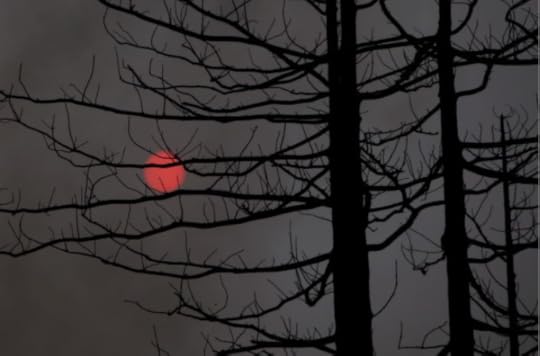
There is a huge amount of destruction going on in the world right now. Between earthquakes, hurricanes, and floods, we thought we’d seen the worst of it. Then California started burning up.
In the last week, the biggest wildfires in California history burned out of control 30 miles to the north, consuming forest, homes, roads, wineries, and pretty much everything in their path. They are now mostly contained and may even be out by tomorrow, though a new destructive wildfire has just started to the south. At least 40 people have died so far in these fires and more than 100,000 people have been displaced.
A lovely round barn I had always admired, built in 1899, was destroyed in Santa Rosa, as were two communities that surrounded it on either side of the highway. The image of it burning haunts me.
I discovered the round barn when I began picking up my mail on the other side of the highway in 2012. I was freshly grieving my daughter’s death then, and trying to put my life back together in some way, shape or form. The barn reminded me of the life I’d left behind in New England, a place where there was another round barn I knew and loved – a place where I’d been happy.
The round barn reminded me of home.
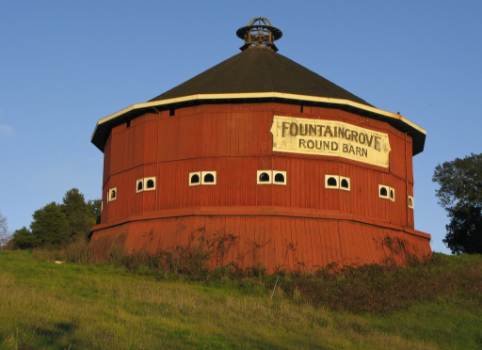
The barn was the last surviving structure of what was one a Utopian community at the end of the nineteenth century. Its buildings were constructed to ‘ascend into the celestial sphere’ once the millennium passed. But they never did.
Unless … well … that’s what’s happening now. Perhaps all of these structures and homes and lives that got lost were built or born only to eventually die.
This is the part we forget in our zeal to get out there, grab life by the gonads and build our empires. All of it – even the most beloved old barn – will sooner or later be turned to dust. As will we. This is the path of life.
Life always leads to death, for how can it not?
But consider this. What if that was the point? What if the fate of this old barn, and the 3500 other structures and countless lives that have been lost so far in these fires, went down in the blaze for some larger reason? Some reason that has to do with developing gratitude, with finding the lessons learned?
What if these losses led to greater kindness, compassion, love and humility and discovering the true meaning of life?
Could it be that the destruction of these wildfires was just life’s not so gentle way of correcting us? Of putting us on course to embrace our true values?
That’s what’s possible when we experience extreme loss. Once we’ve fully and courageously embraced and processed our grief, then we can then travel to the other side of that loss and begin again.
Then we can remember all the round barns we lost, and pay tribute to them in some meaningful way that also gives back to everyone else. Our history is powerful – and when we really examine it, we are reminded how temporary life is.
One winery owner whose property was heavily damaged was able to save a letter written by his great-great grandfather who’d built the place. In the letter, he recounted the earthquake and subsequent fire that destroyed the winery back in 1906.
100 years later, that memento is especially significant.
In my own life, there isn’t a day that goes by that I don’t think of my daughter Teal. Sometimes it’s in sadness, and I just wish I could hear her voice or feel her hug again. But most of the time, it’s a smile at a great moment we shared, or it’s the thrill of telling the story of the donation of her organs to a listening audience.
After the loss, life does and will move on again. That much we know. For now, though, there is the hard work of grieving to do.
I pray for the best for all concerned. And may you find your own treasures in the rubble of destruction, wherever it falls in your life. 
Before the Afterlife Podc ast
“Pain is really the portal to purpose,” Uma Girish says in this wonderful interview. I recommend you listen to this when you have a moment. Despite – or perhaps because – of the topic, this is an amazingly uplifting conversation. Enjoy!
Are you a listener of Suzanne Falter’s Before the Afterlife Podcast?
We welcome you into the Before the Afterlife Facebook Group! This is a place where you can discuss your thoughts and feelings after listening each new episode or really at any time you feel so inclined! We want to make this a relaxed hangout and a safe space where you can share your hopes and fears, lessons and questions, cravings and frustrations. Join here.
The post What Wildfires Can Teach Us About Life appeared first on Suzanne Falter.
September 29, 2017
Her Daughter Got My Daughter’s Heart — a Tale of Two Mothers
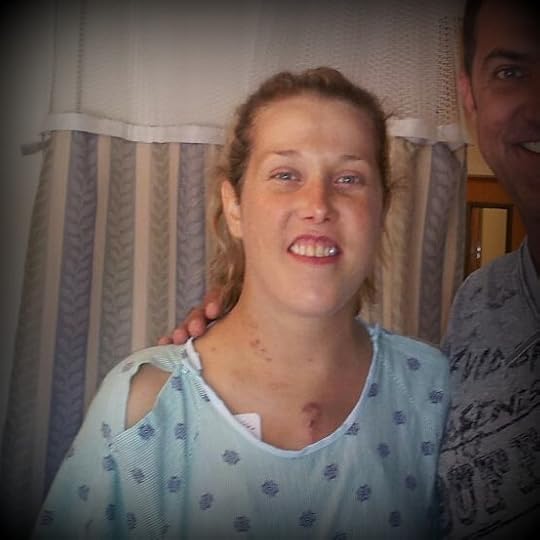
Amera two weeks after her transplant.
This week I did a podcast episode that is particularly personal for me. In it, I have the privilege of interviewing the mother of Amera, the young woman who received my daughter Teal’s heart and kidney after her death.
As one mother to another, Debi and I certainly connect out of simple empathy for the path of motherhood. And we are both happen to be people who love to laugh, and enjoy a good chat. In fact, we genuinely like each other!
But we are also people who started out as total strangers, only to become inextricably linked on August 24, 2012. On that fateful day, Amera, Debi’s daughter, received Teal’s heart and kidney after 20 hours of surgery. Debi’s description of how beautiful Amera looked after the first phase of surgery, when she received her new heart, is breathtaking. For all around Amera, there was a shimmering, sparkling glow.
I say it’s the same glow I’d felt only a week earlier as I connected with Teal’s sparkling, shimmery essence in the afterlife for the first time. It was as effervescent and light as a cloud of champagne bubbles. And yes, just as Debi describes in the podcast, it was, indeed, glowing.
So we have become connected through destiny, karma, or whatever you wish to call it.
We are mothers who know what it’s like to sit by the side of your daughter’s bed, fearing her imminent death. And we are mothers who learned such decisions are not up to us, and so we both had to learn when to fight … and when to surrender.
Today, we are mothers whose DNA is shared in the body of one extraordinary young woman. And we are definitely better for this shared connection, as we both watch Amera thrive in the Cardiac Sonography program she is taking at … yes … the very same college Teal was about to start when she collapsed.
My path with Debi has been a really interesting one, because we didn’t even know each other until about three months ago. It was not until five years after Teal’s death that we all finally felt like we could meet. So we met at Ocean Beach, the very place where we scattered Teal’s ashes – which was Amera’s idea.
That night was an experience I’ll never forget. Of course, there were tears. But there was also a recognition of something so much bigger at work here. Especially when I played a video for them of Teal singing ‘A Change is Gonna Come’. “I feel like I know her,” Amera said simply after she watched the video. There was a basic, beyond-logic recognition for all of us of the God-sent nature of our connection.
Perhaps this is just a very vivid illustration of the connection we all share — the oneness we know about and yet, somehow, seldom glimpse.
Amara is a thoughtful and highly sensitive young woman with an amazing life ahead of her. That much I’m sure of. And as for me and Debi … well, we’ve both been through the ringer, but we agree that we have emerged better for it. Our experiences have been remarkably similar, as this episode will tell you if you choose to listen.
If you do, you’ll hear how Amera made her way with congestive heart failure for more than seven years, until it got to the point where she had to wear a wearable defibrillator vest — to shock her back to life in case she suddenly collapsed.
You’ll also hear what it was like for Debi knowing her daughter’s death was always in the shadows … until her life was finally saved because of my own daughter’s death.
It’s a conversation filled with hardship, hope, light and a lot of love.
I recommend you listen to this when you have a moment, and really get into the idea that we are all truly interconnected. Every last one of us. Even those of us who do not know each other at all. It’s a pretty wild concept when you think about it, and organ donation makes that truth extraordinarily clear.
Enjoy. Listen to the podcast here.
The post Her Daughter Got My Daughter’s Heart — a Tale of Two Mothers appeared first on Suzanne Falter.
September 27, 2017
My New Satirical Novel is Out … WHAT?
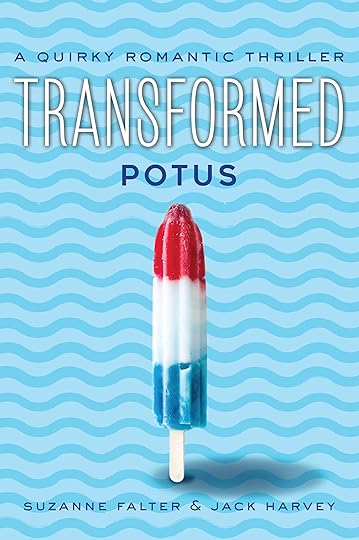 Okay, admit it. You are used to thinking of me as a warm, vulnerable, touchy-feely sort of blogger who shares her deepest stuff. Right? And yet ���
Okay, admit it. You are used to thinking of me as a warm, vulnerable, touchy-feely sort of blogger who shares her deepest stuff. Right? And yet ���
I’m also a novelist who writes quirky, funny, page-turning spy thrillers
Along with my collaborator, Jack Harvey, we created a series called Transformed. In it we like to highlight unusual characters in uncommon situations with intricate plots. Like this ��� ��� the third in our series.
Transformed: POTUS is a funny satire the takes on the US presidency. In it the first post-Trump president is a sex addict to likes to spend his time off not in Camp David, but in Vegas.
Problems ensue when it becomes clear that our president can’t seem to hang onto the nuclear biscuit with the gold codes on it. He just keeps losing the damn thing.
The action centers on Charley, the spy who���s assigned to keep bad actors out of the President���s midst — and who seriously has his hands full.
Want to read a free tidbit?��Click here!��And you can check out the full book here.
Viva ��� Las Vegas?
Yeah baby!
The post My New Satirical Novel is Out … WHAT? appeared first on Suzanne Falter.
September 21, 2017
How I Tamed My Wild, Creative, Distractible Brain (without Drugs) and Began Getting More Done
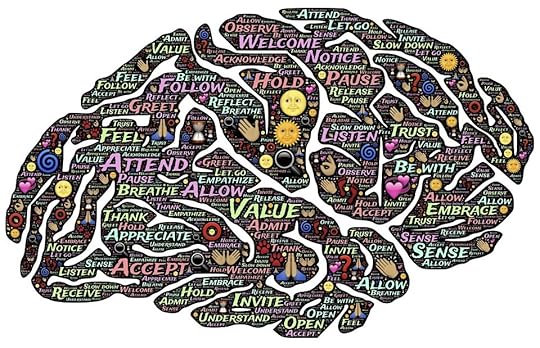
I don’t know about you, but I have had a very big case of wandering brain. So much so, that it kept me from developing into my full potential in much of my adult life.
Some might call this a case of ADD, but I never thought of it that way. I always felt it was part the celestial seasoning that peppers my brain. It’s just the way I am. Which is not to say I couldn���t use a little help.
The great news is that over the last few years I’ve learned to rein in this wild, rambling brain of mine. I attribute a lot of this to meditation, the soothing balm that helps all of us slow down, calm down, and chill out.
Once I began a regular meditation practice of only 15 minutes every day, I felt more grounded and relaxed in my body most of the time. I also discovered I could be much more present for other people. Even better, I found myself forgiving myself for little things that once caused me great stress and annoyance.
Once meditation was solidly on board, the path got even more interesting. I discovered my wandering brain could be reined in by using binaural beats in my headphones while I worked. If you’re not equated with binaural beats, they are a very cool wave technology that activates both hemispheres of the brain to work in sync more effectively.
This can be extremely helpful for insomnia, relaxation, and focusing. The beats sound like a rhythmic, slightly dramatic sort of drumming ��� yet they are subtle enough to hide behind a gentle rainfall, or soothing music. They are weirdly addictive once you get used to them.
A friend turned me onto a website called brain.FM that has really been revolutionary for me. (Brain.fm includes several different kinds of binaural beats that you can sign up for on an annual subscription. A pretty good coupon is available here.)
The first time I used binaural beats, I remember I was sitting in a caf�� in Oakland. Suddenly, the world around me dimmed out. Gone were the chatting twenty-somethings, the driving caf�� music, the endless stream of gluten free treats going by. Instead ��� it was just me and my work.
I dug in. Then I looked up an hour later. I had just completed something I���d been avoiding for days, and I sat there in amazement, looking over my work. Damned if it didn���t work!
Using binaural beats has been great fun for me as I now work every day with greater focus and ease. It���s just ��� easy! Even the hard stuff.
So I was delighted to find out that Eben Alexander, an author I highly respect, has used binaural beats to crank out his own stockpile of books. Turns out he and his collaborator, Karen Newell, have also been using and developing binaural beats in their teachings for others as well.
Notably, they use the beats for an interesting sort of everyday transcendence, claiming it helps them travel to the other side, and connect more deeply with their spiritual guidance. I love that! After all, who doesn’t want to travel to the other side on a regular basis? I sure do.
(If you want to catch last week’s podcast interview with Eben Alexander, click here ��� Karen Newell ��is our guest on Before the Afterlife this week.)��
If you consider yourself a ���brain adventurer��� ��� or even a procrastinator — why not get yourself a pair of good headphones, and start to dig into the vast and incredible world of binaural beats to sooth and work with the brain. You’ll accomplish more, feel more relaxed, and who knows where you’re going to travel?
If you have your own fun experiences or resources for binaural beats to share, please leave a comment below. I look forward to hearing what you think!

Are you a listener of Suzanne��Falter���s Before the Afterlife Podcast?
We welcome you into the��Before the Afterlife Facebook ��Group! This is a place where you can discuss your thoughts and feelings after listening each new episode or really at any time you feel so inclined! We want to make this a relaxed hangout and a safe space where you can share your hopes and fears, lessons and questions, cravings and frustrations.��Join here.
The post How I Tamed My Wild, Creative, Distractible Brain (without Drugs) and Began Getting More Done appeared first on Suzanne Falter.

